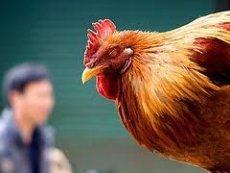New publications
Humanity was saved from the bird flu pandemic by 5 mutations
Last reviewed: 30.06.2025

All iLive content is medically reviewed or fact checked to ensure as much factual accuracy as possible.
We have strict sourcing guidelines and only link to reputable media sites, academic research institutions and, whenever possible, medically peer reviewed studies. Note that the numbers in parentheses ([1], [2], etc.) are clickable links to these studies.
If you feel that any of our content is inaccurate, out-of-date, or otherwise questionable, please select it and press Ctrl + Enter.

The H5N1 bird flu virus can kill, but fortunately it is not transmitted from person to person, which has saved us from a pandemic.
Ron Fouchier of the Erasmus Medical Center in the Netherlands and his colleagues showed that the world was only five genetic mutations away from disaster. They allowed the virus to spread between laboratory mammals while remaining just as deadly.
"The virus was transmitted as efficiently as seasonal flu," the researcher told a flu conference in Malta.
H5N1 was discovered in 2004 in East Asia in poultry; it soon spread across Eurasia, infecting 565 people and killing 331. Despite millions of infected birds, as well as infections in humans, cats, and pigs, no strain capable of spreading between mammals has emerged. Attempts to create one in the lab have failed, and some virologists have concluded that H5N1 simply could not produce such a strain.
The new work suggests otherwise. First, the scientists engineered three mutations in H5N1 that allowed it to adapt to mammals. This version killed ferrets (which respond to flu viruses the same way humans do) but did not spread from one animal to another.
The viruses isolated from the sick ferrets were then transplanted into other ferrets (a standard technique for producing pathogens adapted to animals). The procedure was repeated ten times. On the tenth round, a strain emerged that could be transmitted between ferrets kept in different cages. And killed them.
The result was many strains with many new mutations, but two of them were present in all viruses. To these two, scientists added three more; from now on, H5N1 will be tested only with these five varieties.
All of these mutations have already been found in birds - but separately. "But if they occur separately, they can occur together," says Mr. Fouchier.
The study's findings have sparked heated debate. Opponents who believe H5N1 is incapable of adapting to mammals point out that ferrets are not humans, noting that if the virus could mutate in such a way, it would have done so already. Other virologists find neither argument compelling.

 [
[